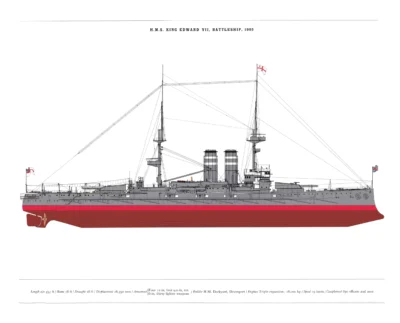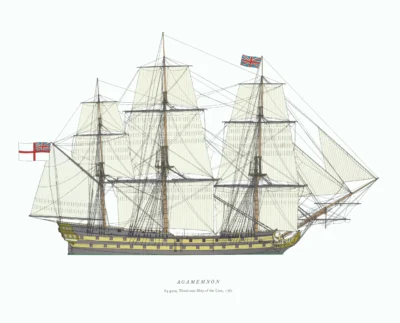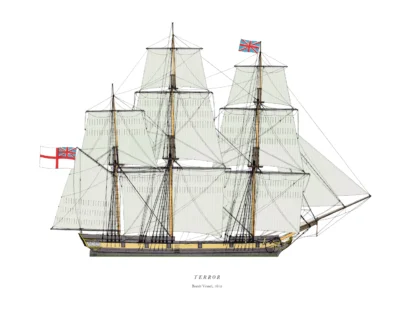HMS Terror, 1812
£20.00
Terror: Full rigged Bomb Vessel; this ship’s action at Baltimore was the inspiration for “The Star Spangled Banner” (scroll down for a more detailed Description)
Published 1968 by © Hugh Evelyn Limited; drawn by Scottish marine artist John Gardner (1930-2010)
Size: c. 44 x 35 cm [17″ x 14″] (may vary slightly from printers’ cut 50 years ago)
Printed on high white matt cardstock 144 g/sm2.
Print is LARGE size – shipping is the same for 1 to 10 prints (based on largest print size in your order) – see Shipping & Returns.
In stock
Description
Terror:
Full rigged Bomb Vessel
Built: Robert Davy shipyard, Topsham, Devon, UK;
Laid: 1812: Launched and completed: 1813;
325 Tons; Length: 102′ (31 m); Beam: 27′ (8 m);
Armament: Guns: 1 x 13″ inch” (330 mm) mortar; 1 x 10″ inch” (240 mm) mortar;
Built over 2 years at Topsham, Devon, England, Terror was a bomb vessel of the Vesuvius Class. Bomb vessels were so called because their main armament was one or two mortars of large calibre capable of firing a very heavy projectile on a high curving trajectory. They were used mainly for bombardment of shore facilities and defensive positions. However, as heavy vessels with unconventional rigging they were poor sailers and had only a brief existence, the last one, Sulphur, was scrapped in 1857. Terror participated in the War of 1812 as one of the ships involved in the bombardment of Fort McHenry at Baltimore (inspiring Francis Scott Key to write the poem that eventually became the lyrics for “The Star-Spangled Banner“). Later converted into a polar exploration ship, she participated in the Arctic expedition of 1836 – 1837, the Ross Expedition of 1839, and the attempt to force the Northwest Passage in 1845, during which she was lost with all hands. In 1854 a few relics and the Captain’s rough log alone were found. On 12 September 2016, the Arctic Research Foundation announced that the wreck of Terror had been found in Nunavut’s Terror Bay, off the southwest coast of King William Island. It has subsequently been protected as a grave site and is being researched by Parks Canada who are responsible for the area near the site off the south coast of King William Island. Parks Canada’s Underwater Archaeology Team returned to the wrecks in May 2022, after a two-year postponement caused by the Covid pandemic.
Additional information
| Weight | 0.0223 kg |
|---|---|
| Dimensions | 44 × 35.5 cm |





